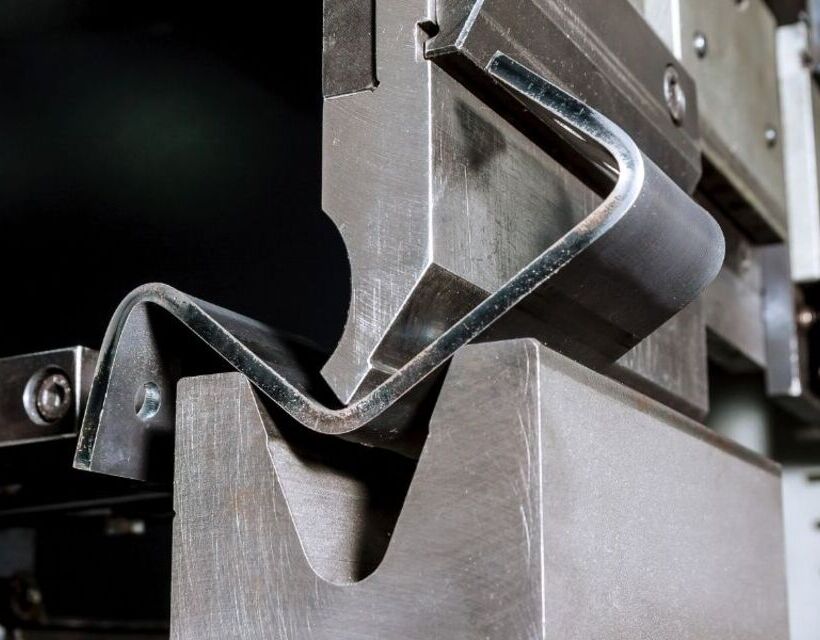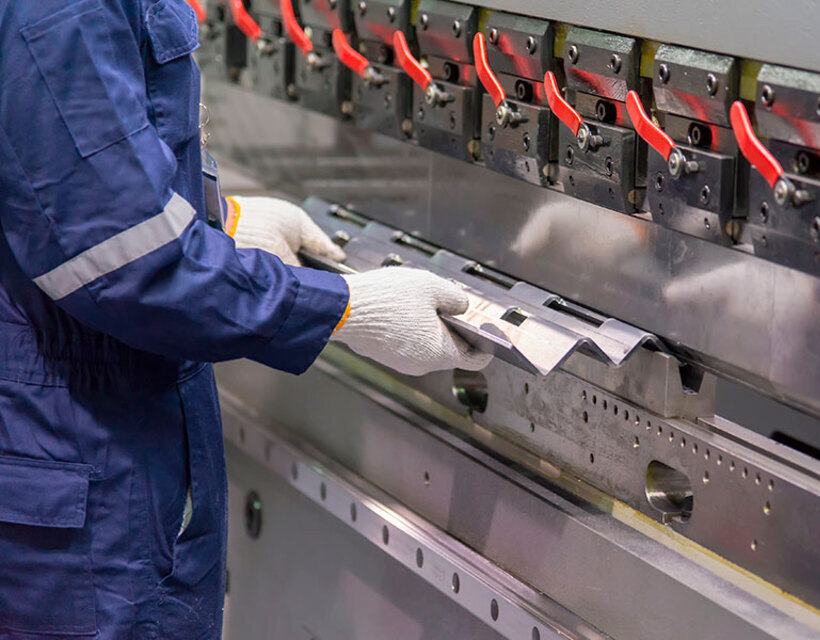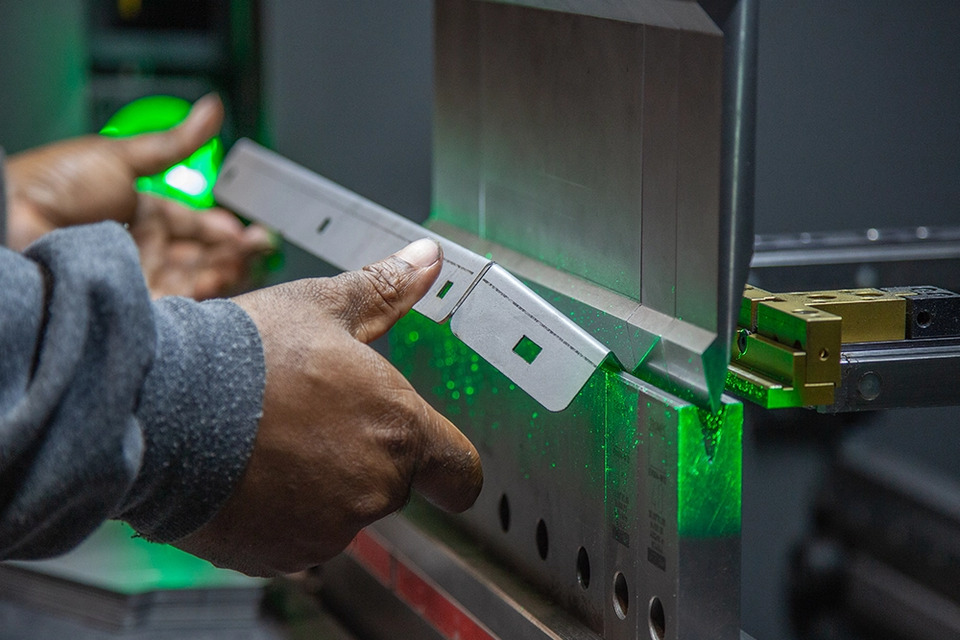Are you looking to become an expert at sheet metal bending?
Sheet metal bending is a skill that requires precision and patience, but with the right techniques and knowledge, you can master it.
In this article, we'll explore the basics of sheet metal bending, including types of bending and strategies for successful projects. We'll also discuss considerations before starting a project, as well as common errors to avoid.
Finally, you'll learn tips for mastering the art of sheet metal bending.
Get ready to take your skills to new heights by learning how to expertly work with sheet metal!
Overview of Sheet Metal Bending

You can bend sheet metal to create amazing shapes and structures, so let's get started exploring what makes bending sheet metal so special! Sheet metal is a versatile material used in many industries, ranging from automotive manufacturing to aviation. Bending sheet metal allows for a variety of intricate curves and angles that would be impossible with other materials.
It's an art form where the ability to understand the properties of the material, as well as its limitations, is key. Sheet metal bending requires patience and skill, making it a craft that requires mastery. The most important factor in successful bending is to have good control over the material while ensuring uniformity in bends by taking into account factors like thickness, grain direction, and tempering of the material.
With practice, you'll be able to master this art form and unlock your potential as a creator!
Types of Bending
By understanding different types of bending, you can craft beautiful creations with metal. There are two main types of sheet metal bending: air bending and bottoming.
Air bending is the process of pushing a punch into a V-shaped die and forcing the material to bend in 90 degrees or less. This type of bend requires very little force on the part of the operator but also limits how much material can be bent in one pass.
Bottoming occurs when a punch is inserted into an U-shaped die, allowing for greater control over the angle the material bends at as well as more flexibility in terms of how much material can be bent in one pass. In general, these two processes are used together to create complex shapes out of sheet metal such as curved channels or brackets.
Depending on your project, either air bending or bottoming may be more suitable for achieving your desired outcome.
Advantages of Sheet Metal Bending
Sheet metal bending is a valuable tool that can help you create beautiful, intricate designs with ease. There are several advantages to using this technique:
- You can easily manipulate the material into any shape or form you need without having to fabricate custom parts.
- It allows for greater precision and accuracy compared to other methods of shaping metal.
- It's a relatively low-cost option compared to other techniques like welding or casting.
Sheet metal bending is fast and efficient, making it perfect for high-volume production runs. You can produce complex shapes with minimal effort and skill level required.
With sheet metal bending, you can quickly achieve accurate results while saving time and money in the process. The process is also simple enough for hobbyists and beginners alike, meaning anyone who wants to create something special out of metal can do so with relative ease!
Plus, it's extremely versatile, allowing you to work with almost any type of sheet metal imaginable.
All in all, if you're looking for an effective way to produce unique pieces from sheet metal, look no further than sheet metal bending!
Considerations Before Starting a Sheet Metal Bending Project
Before beginning a sheet metal bending project, it's important to consider a few things. Firstly, think about the complexity of the design and the amount of time you have. Complex designs can take three times longer to create compared to simpler ones, so plan accordingly!
Secondly, ensure that you have access to the right tools for your project. You'll need an appropriate sheet metal cutting tool, such as a shear or nibbler, as well as a good quality bender. There are many benders available in various sizes and styles, so choose one that suits your specific needs.
Thirdly, make sure you have enough workspace to accommodate your materials and tools. This will help you work efficiently and safely. Lastly, take into account any special safety requirements needed for your bends. Some require gloves or protective eyewear when working with certain metals.
With all this information in mind, you're ready to start planning and executing your project!
Proper Setup of the Sheet Metal Bending Machine

Having the right setup of a sheet metal bending machine is essential for successful projects, so make sure you take the necessary steps beforehand.
To begin, make sure you know what type of material and thickness of metal you'll be working with. This information is key to selecting the correct machine settings and tools for your project. Once you've chosen the appropriate equipment, double-check that all parts are in proper alignment before turning it on. Additionally, inspect all parts for any signs of damage or wear and replace them if needed.
Next, adjust the power setting by taking into account how thick the material is, as well as what type of bend you need to create. With those parameters set up correctly, secure a good grip on your workpiece by using jigs or clamps so that it won't move while being bent.
Finally, test out your setup with some scrap pieces before starting on your actual project. This way, you can adjust any settings if needed before beginning your main task. Taking these steps prior to any sheet metal bending job will ensure that everything runs smoothly from start to finish!
Techniques and Strategies for Sheet Metal Bending
You can easily create impressive sheet metal projects with the right techniques and strategies. If you practice using your fingers to control the amount of pressure applied when bending a piece of metal, you'll quickly master the skill and be able to produce more professional results.
Learning how to use a sheet metal bender in combination with other tools such as shears and notching machines is also essential for creating accurate bends. To get started, begin by learning some basic techniques such as crimping or folding, then move on to difficult shapes like circles or curves.
As you gain more experience, experiment with different tools and techniques until you find the ones that work best for your project. With practice and patience, you can become an expert at bending sheet metal!
Common Sheet Metal Bending Errors
Making mistakes when bending sheet metal can be frustrating, so it's important to familiarize yourself with common errors and how to avoid them.
One of the most frequent errors is improper angle measurement, which can lead to inaccurate bends. To get accurate measurements, make sure you use a protractor or angle finder and measure from the opposite side of your workpiece in order to ensure an accurate result.
Another mistake is not using the correct tool for the job. If you're working on a more complex project that requires precise angles, make sure you have the right tools for the job.
Additionally, always double-check your measurements before making any cuts or bends—even small inaccuracies can cause major problems later down the road.
Finally, never attempt a bend without testing it on scrap first. This will help you determine whether your technique is correct and if any adjustments need to be made.
By avoiding these common pitfalls, you'll save time and frustration while mastering this craft!
Tips for Mastering Sheet Metal Bending

Gaining proficiency in sheet metal bending takes practice, but a few simple tips can help you master the craft quickly and accurately. Here are four quick tips to get started:
- Always make sure your materials are properly clamped down when you start working. This will ensure that the results of your work come out exactly as you planned them.
- Take time to measure carefully before making any cuts or bends in your materials. A little extra precision now can save you from having to do costly repairs later on.
- Get to know the different types of tools available for sheet metal bending and choose the ones best suited for your project's needs. Investing in quality tools is worth it in the long run since they'll last longer and give better results than lower-quality alternatives.
- Practice makes perfect! Keep practicing with scrap pieces until you're comfortable enough with sheet metal bending techniques and processes to begin tackling bigger projects with ease and confidence.
With these helpful tips, anyone can learn how to bend sheet metal like a pro! So don't be afraid – get out there and start mastering this art form today!
Conclusion
You've come so far in mastering the art of sheet metal bending - you're now a pro! You know all the best techniques, strategies, and tips for successful sheet metal bending projects.
Now it's time to show off your skills and create some amazing works of art. With the right machine, proper setup, and your newfound knowledge, you can easily bend sheet metal into any shape or form imaginable.
So go out there and get creative - you're an absolute master at sheet metal bending!
